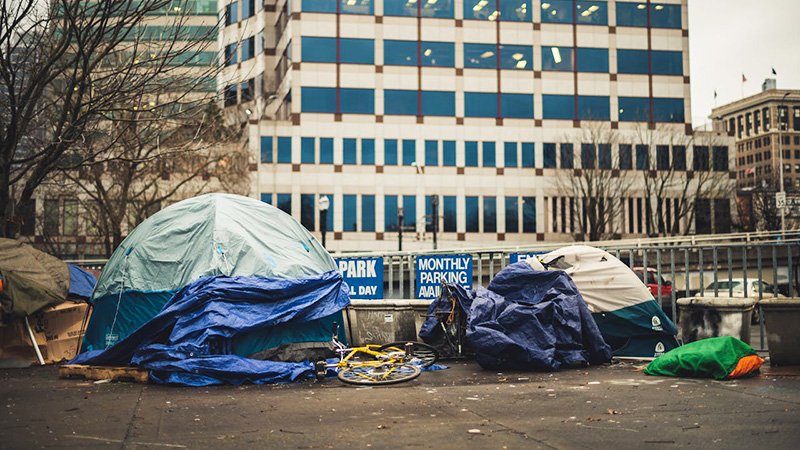Conversations with local decision-makers are an essential part of advocating for stronger cities. To make the best use of this sometimes-rare opportunity, you need to know the right questions to ask.
Read MoreWe can’t wait for big government housing programs to fix the housing affordability crisis — in fact, they can actually make things worse. But don't lose hope. Local governments have the power to tackle the housing crisis in ways that actually work.
Read MoreMany people believe that, with some zoning changes, large-scale development will be the true key to the housing crisis. This isn’t the case. Large-scale development worsens the issues that caused the crisis in the first place. Here’s a few of the ways incremental development is better for cities than large-scale.
Read MoreWisconsin offered a $3 billion dollar subsidy to Foxconn and were promised a $10 billion factory and 13,000 jobs in exchange. Instead, the locals got three empty buildings, a few hundred jobs, and a mountain of debt. Sorry, Wisconsin. As Ronny Chieng from the Daily Show put it, “You got catfished.”
Read MoreIlana Preuss is the founder and CEO of Recast City, a program that helps cities build strong downtowns by empowering small-scale manufacturers. Today, she joins host Tiffany Owens Reed to discuss the importance of small-scale manufacturing and her experiences as a city builder.
Read MoreSafety practices and education are vital for children, but when that education is focused solely on personal responsibility and is enforced through shame, it can do more harm than good. Personal responsibility can only go so far: For streets to truly be safe, changes to the transportation system itself are needed.
Read MoreFamily Dollar is shutting down many of its urban stores, while Dollar General is expanding in rural areas. This week’s episode explores the reasons behind their differing success and the effect dollar stores have on neighborhoods.
Read MoreWhen residents ask why they should allow more housing in their neighborhood, advocates often default to altruism, suggesting that an influx of people will have negative effects but that giving them a place to live is still the right thing to do. But there are a myriad of ways that an increased population can improve your quality of life. Here are some of them.
Read MoreSometimes, cities say that they’re taking an incremental approach when they’re really just breaking a master plan down into steps. This method lacks the creative, bottom-up nature that makes incremental development so resilient, tricking people into believing they’re making their city stronger when they’re really not.
Read MoreWorking with your local engineers and transportation officials can be challenging. How do you collaborate with people who are often responsible for the bad infrastructure in your place? One successful group focuses on bringing positivity and concrete suggestions to the conversation.
Read MoreIncremental development is the most resilient and financially responsible way for communities to grow and improve. Town builder Monte Anderson joins us today on Upzoned to talk about his experience as an incremental developer and the important principles of the field.
Read MoreCriminalizing homelessness is often an attempt to make public spaces safe and comfortable. It fails miserably, at the cost of persecuting some of the most vulnerable members of the population. If cities want a real, sustainable solution to a homelessness crisis, they need to address the underlying cause: North America’s broken housing system.
Read MoreNorth American road infrastructure signals to drivers that there shouldn’t be nondrivers in an area, so they fail to see the people who are actually there. This increases the risk of collisions and prevents reform. If cities are to have safer streets, they need to start seeing the people who use them.
Read MoreLocal government is supposed to be the highest form of collaboration, but it doesn’t always feel that way. Too often, city rules favor opponents of change, meaning one dissenting voice can doom a project. However, Jersey City demonstrates how cities can increase collaboration by adopting an iterative approach to city planning.
Read MoreRegulatory reform doesn’t always mean replacing or changing zoning codes. Great designers are experts at working within existing codes to increase housing options, and this method is often more attainable and scalable than actually changing the code. Here’s one such example of using existing code to create incremental housing.
Read MoreDanny Pearlstein is the policy and communications director at Riders Alliance, a nonprofit transit advocacy organization in New York City. Today, he joins host Tiffany Owens Reed to discuss congestion pricing, car dependency and public transit in the Big Apple.
Read MoreIn this episode of Upzoned, host Abby Newsham is joined by Doug Barrick, the town manager of Rutherfordton, North Carolina, to talk about what it’s like to participate in the Strongest Town Contest and how Rutherfordton is working to become a stronger town.
Read MoreOther cities can learn a lot about placemaking from Cincinnati. It's a great example of what to do…and what not to do. Here are some observations from 36 hours spent in the city.
Read MoreLocal governments that follow a “mindlessly pro-business” approach sacrifice community well-being in the name of commerce, but end up devastating their cities’ downtowns by misunderstanding what helps an area succeed economically. It’s time to realize that helping local businesses means helping the community, too.
Read MoreDevelopers often have to jump through hoops to get their projects approved by a city. When a Costco branch in California was faced with lengthy waiting periods and public debate, it decided to take a different approach: adding 400,000 square feet of housing to its plans so it qualified for a faster regulatory process.
Read More



















